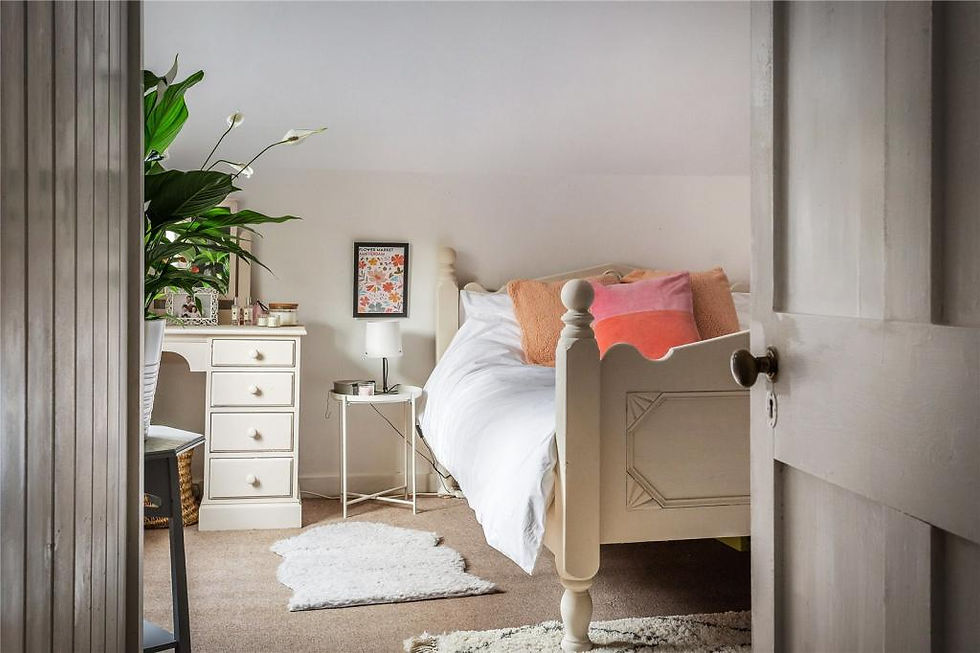Capturing Architectural Details: The Art of Visual Storytelling Through Design
- James Morris

- Jul 16
- 3 min read
Architectural photography is more than just documenting buildings—it’s about distilling the essence of a space into a single frame. It requires a sharp eye, technical mastery, and an appreciation for both the built environment and how light interacts with it. For estate agents, property developers, architects, and designers, working with a photographer who understands this complexity is essential.
In this article, we explore the critical role of detail in architectural photography and how careful attention to light, composition, and perspective allows a structure to speak visually—whether it's a modern new build or a historic landmark.
Why Architectural Details Matter
In architectural photography, details aren’t just decorative—they’re narrative. Mouldings, ironwork, stone textures, and joinery choices all tell a story about the building’s purpose, its era, and its craftsmanship.
Capturing these elements effectively allows viewers to connect emotionally with the space. A close-up of weathered brickwork or finely carved woodwork, for example, doesn’t just document a feature—it expresses the care and thought behind the design. For clients marketing a property or showcasing a project, these thoughtful visual insights can elevate perception and add lasting value.

How an Expert Approach Enhances Results
Photographing architecture requires more than just good equipment. It’s the photographer’s understanding of design language and spatial storytelling that transforms a good image into a compelling one. Here are some professional considerations that go into every shoot:
1. Timing and Light
Light dramatically influences how architectural forms are perceived. The golden hour offers soft flattering light that enhances textures and materials. Conversely, diffused overcast light can highlight subtle features without harsh shadowing. An experienced photographer plans around these conditions to capture each structure at its visual best.
2. Composition and Perspective
Capturing architectural detail requires precision. Using composition techniques such as leading lines, framing, and the rule of thirds ensures visual balance. Shifting perspectives—shooting from lower angles to emphasise scale, or straight-on to show symmetry—helps highlight design intent. The goal is to photograph a space the way it was meant to be experienced.
3. Technical Execution
A tripod ensures perfect sharpness in low light or with long exposures. Tilt-shift lenses or careful post-processing eliminate distortion, especially important when photographing interiors or tight urban spaces. A good architectural photographer combines in-camera technique with subtle editing to preserve realism while enhancing clarity and impact.

Beyond the Facade: Textures, Craftsmanship, and Context
Great architectural photography looks beyond the wide shot. It celebrates the nuances: the repetition of a tile pattern, the contrast of materials, or the intentional alignment of doorways and corridors.
When photographing a heritage property, for example, capturing the patina of aged wood or the masonry’s hand-hewn texture speaks volumes. With modern architecture, attention to minimalism, geometry, and light reflections brings out the structure’s personality.
Importantly, every image should respect the architect's vision while drawing out the emotional atmosphere of the space.
Post-Production: Enhancing Without Overdoing
Refining architectural images in post-processing is part of the craft. Adjustments are subtle but critical:
Lens correction ensures straight lines and accurate proportions.
Shadow and highlight control helps surfaces read clearly without overexposing bright materials or losing texture in the dark.
Color accuracy preserves the integrity of materials and finishes.
Selective sharpening maintains a natural but crisp result, ideal for both print and digital marketing.
When done with care, editing supports the image without distracting from the design itself.

Understanding Style and Purpose
Knowledge of architectural styles—from Georgian to Brutalist, Scandinavian to Neo-Gothic—helps a photographer make informed choices about what to emphasize. For instance, the verticality and ornamentation of Victorian buildings call for a different approach than the clean lines of a mid-century structure.
Understanding the design intent allows a photographer to highlight features that resonate with viewers, whether they are buyers, investors, or design enthusiasts.




Comments